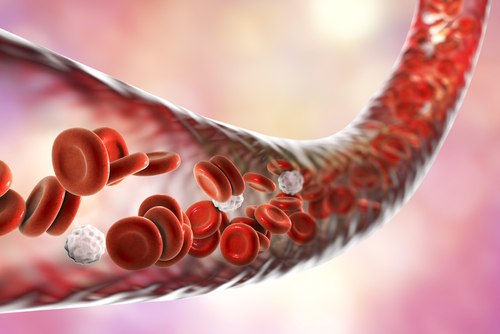High Cardiac Troponin Levels Linked to Poor Outcomes in PH, Study Shows

High levels of cardiac troponin in the blood of pulmonary hypertension (PH) patients are associated with a poorer prognosis, according to a study.
The meta-analysis study, “Serum Cardiac Troponin Elevation Predicts Mortality in Patients with Pulmonary Hypertension: A Meta‐Analysis of 8 Cohort Studies,” was published in The Clinical Respiratory Journal.
PH is characterized by the narrowing and increased stiffness of pulmonary arteries that transport blood from the heart to the lungs. PH-associated obstruction of arteries can result in a weakened and enlarged heart, subsequently causing heart failure and a poor prognosis.
While PH-related symptoms are well-known, the disease causes are often unclear. This, along with with the lack of noninvasive approaches to diagnose PH (right heart catheterization being the gold standard) highlights the need for new markers and therapeutic targets to improve the prognosis of affected patients.
Troponin is an important complex consisting of three proteins (troponin C, T, and I) that control the contraction of skeletal and cardiac muscles. Although cardiac troponin (cTn) is important for heart function, recent studies have shown associations between high cTnT or cTnI levels, and poor PH prognosis.
To better understand the relationship between cTn levels and PH, researchers performed a meta-analysis, gathering and comparing results from different publications.
Interested in PH research? Check out our forums and join the conversation!
In total, the team analyzed eight published articles. These publications assessed 739 patients with PH (age range from 26 to 75.8 years) in all, and included five studies in Europe and three studies in the U.S. Of these studies, six were prospective (following a population over time to find how specific factors affect outcomes), one was retrospective (analyzing outcomes that have already occurred), and one was a special combination of the two.
There was a total of 192 deaths (26%) among the 739 participants analyzed. A regional comparison showed a higher mortality rate in the U.S. studies than the European ones.
Researchers found a positive association between cTn levels and poor survival. Of the participants, 55.8% showed high blood levels of cTn, and 48.8% died during the course of the studies. In contrast, 18.6% of participants with normal cTn levels died. These results suggested that cTn elevation was associated with a more than three times increased mortality risk in PH patients.
Researchers next analyzed the effect of specific cTn proteins on PH mortality. Two of the eight publications included findings with cTnI, five included cTnT findings, and one of the studies reported on both proteins. Comparisons of cTnT and cTnI levels in PH patients showed that cTnI was a better predictor of mortality than cTnT.
According to the team, these results may be controversial, especially since a previous prospective study failed to show an association between cTnI levels and PH severity in infants. Still, they argue that the association between cTn levels and mortality found in the present study supports the predictive value of cTn in adults.
A problem encountered by the researchers was the inconsistent assay types and set cut-offs between the studies. For example, cut-offs ranged from 1.2 to 14 ng/L in cTn levels among five of the studies. Yet the overall low variation in outcomes among the studies and the consistent association found between cTn levels and mortality supported the credibility of the results, they said.
“Although different studies detected the expression cTnT or cTnI by various methods, the mortality in the cTn‐positive group was higher than that in the cTn‐negative group,” the researchers wrote, adding that “serum cTn elevation emerged as an independent predictor of increased risk of mortality in PH patients.”
They concluded that “regardless of the assay used, Tn levels can be used to stratify patients with PH,” although “future studies are needed to determine how to manage these high-risk patients and how to improve their outcome.”







